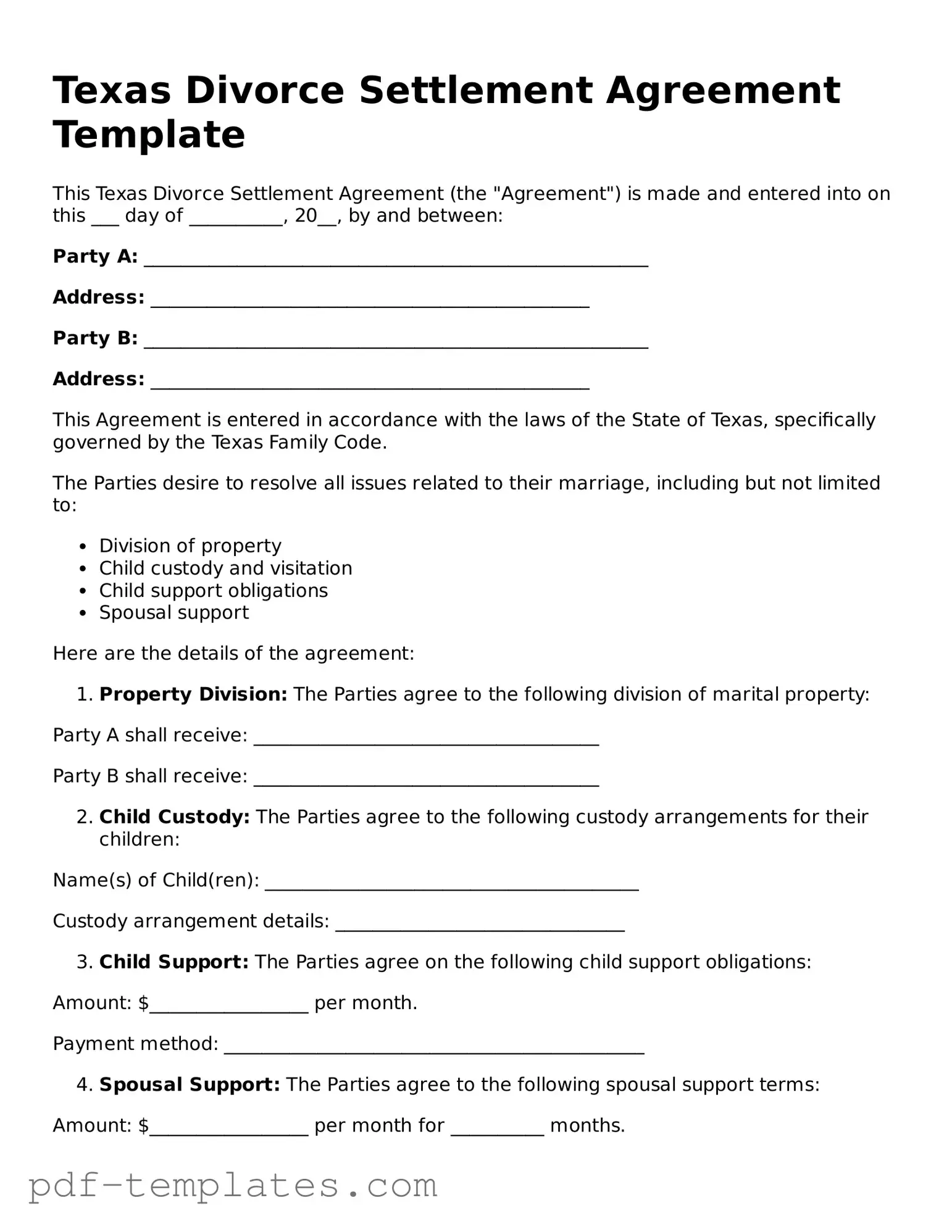The Texas Divorce Settlement Agreement form shares similarities with the Marital Settlement Agreement. Both documents serve to outline the terms of a divorce, detailing how assets and debts will be divided between the spouses. A Marital Settlement Agreement is often used in uncontested divorces, where both parties agree on the terms without the need for litigation. This document can cover various issues, including property division, child custody, and support payments, much like the Texas Divorce Settlement Agreement. Both documents aim to provide clarity and mutual understanding, reducing the likelihood of future disputes.
Another document akin to the Texas Divorce Settlement Agreement is the Child Custody Agreement. While the Divorce Settlement Agreement encompasses a broader range of topics, the Child Custody Agreement focuses specifically on arrangements regarding children. It outlines who will have legal and physical custody, visitation schedules, and decision-making responsibilities. Like the Texas Divorce Settlement Agreement, this document is crucial for ensuring that both parents understand their rights and responsibilities, thereby promoting a cooperative co-parenting relationship.
The Separation Agreement is also comparable to the Texas Divorce Settlement Agreement. This document is often used when couples decide to live apart but are not yet ready to divorce. It lays out the terms of separation, including property division and support obligations, similar to what is found in a divorce settlement. Both agreements aim to create a clear framework for the parties involved, helping to prevent misunderstandings and conflicts during a transitional period.
The USCIS I-864 form, also known as the Affidavit of Support, is a critical document used in family-based immigration processes. It serves as a pledge from a sponsor to financially support an immigrant, ensuring they will not become dependent on government assistance. This form is essential for those seeking permanent residency in the United States, binding the sponsor to specific financial obligations. For more details, you can refer to the documentation available at https://documentonline.org/blank-uscis-i-864/.
The Property Settlement Agreement is another related document. This agreement specifically addresses the division of marital property and debts. It is often included as part of the divorce proceedings, detailing how assets will be allocated. While the Texas Divorce Settlement Agreement covers a wider array of issues, the Property Settlement Agreement focuses solely on financial matters. Both documents seek to provide a fair resolution and protect the interests of both parties.
Lastly, the Parenting Plan bears resemblance to the Texas Divorce Settlement Agreement, particularly in cases involving children. The Parenting Plan outlines how parents will raise their children post-divorce, including custody arrangements and visitation rights. While the Divorce Settlement Agreement may include some aspects of parenting, the Parenting Plan is more detailed regarding the day-to-day responsibilities and schedules. Both documents aim to ensure the best interests of the children are prioritized, fostering stability and predictability in their lives.
